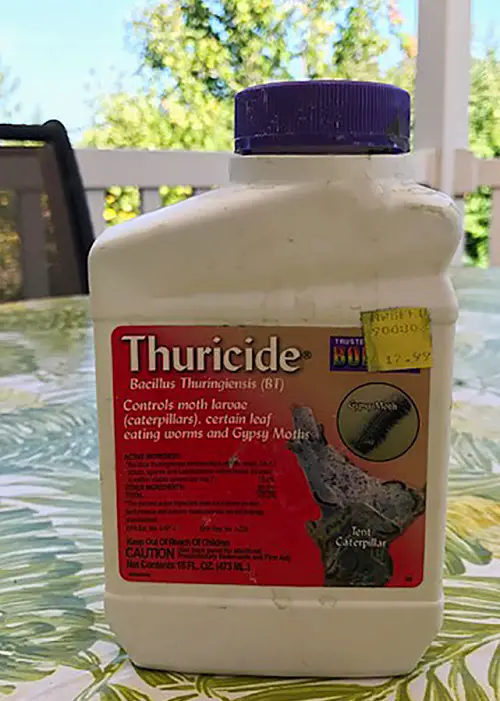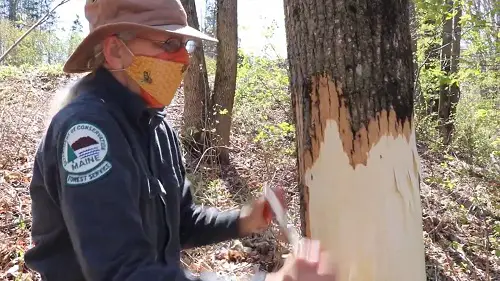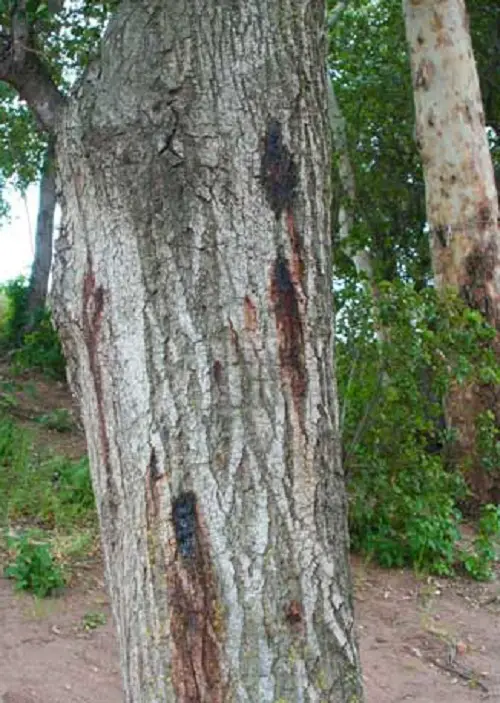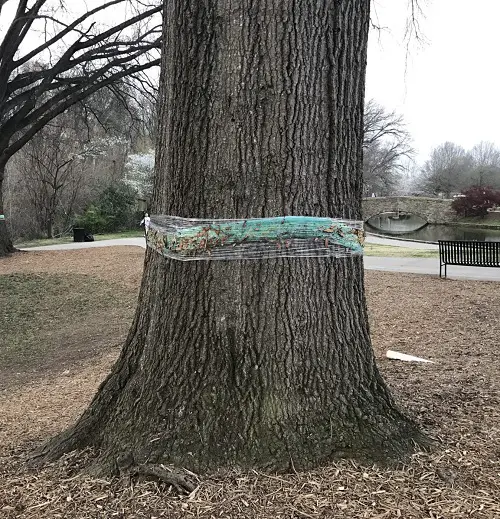Here is the list of the best Oak Tree Borers Treatment DIY Recipes that are natural and effective. Try them to protect your trees from infestation! 
Oak trees are one of the most popular and widely-grown trees in North America. They are valued for their beauty, strength, and resilience. However, oak trees are not immune to pests and diseases, one of which is the oak tree borer. In this guide, we will provide Oak Tree Borers Treatment DIY Recipes that you can use to protect your oak trees.
What are Oak Tree Borers?
Oaktree borers are a type of beetle that feeds on the inner bark and wood of oak trees. They are most commonly found pests in oak trees that are under stress or have been damaged by injury, pruning, or other factors.
They lay their eggs in the bark of the tree, and when the larvae hatch, they begin to feed on the inner bark and sapwood, causing extensive damage. The larvae can cause significant structural damage to the tree and, in severe cases, can lead to the death of the tree. Struggling with oak borer identification? Some of the Common Types of Oak Tree Borers Include:
- Two-lined Chestnut Borer (Agrilus bilineatus): There are many borer beetles in oak trees. The two-lined chestnut is a beetle that is a serious pest to chestnut borer oak trees, causing the decline and death of the trees.
- Oak Pinhole Borer (Platypus cylindrus): A small beetle that bores tiny holes in the bark and feeds on the sapwood beneath.
- Gold Spotted Oak Borer (Agrilus auroguttatus): It bores into the trunk and branches of oak trees, feeding on the sapwood and causing wilting, yellowing, and killing the affected branches. Want the best gold spotted oak borer treatment? Read on.
- The Red Oak Borer (Enaphalodes rufulus): It attacks red oak trees, causing significant damage to the trunk and branches. The larvae of the red oak borer feed on the sapwood, causing wilting, yellowing, and death of the affected branches and reducing the tree’s overall health and vitality.
- Mediterranean Oak Borer (Xyleborus monographus): The Mediterranean oak borer is a destructive pest. It is an ambrosia beetle that poses a significant threat to oak trees in Calistoga and California, causing extensive damage to their health and vitality.
Have a look at the 50 Best Types of Oak Trees here
Identifying Oak Tree Borers
Identifying oak tree borers can be challenging even if you have oak tree borers pictures; look for the signs frequently during the spring and summer. There are several signs to look for. These include:
- D-Shape Exit holes: The adult borers emerge from the tree through small, round holes in the bark. These holes are usually about 1/4 inch in diameter and are a good indicator of an oak borer infestation.
- Bark Discoloration: The larvae of oak tree borers feed on the inner bark and sapwood, causing the bark to become discolored and brittle. This can result in large, dead areas on the tree trunk and branches.
- Thin or Bare Branches: Oak tree borers can cause the branches of an infected tree to become thin or even bare, as the larvae feed on the inner bark and sapwood.
- Sap or Resin Flow: If the larvae have damaged the tree’s sapwood, sap or resin may begin to flow from the trunk or branches of the tree.
- Plenty of Woodpeckers: Woodpeckers pecking at the bark of an oak tree can be an indicator of a borer infestation. They feed on insects, including borers, that live in the tree. If you see woodpeckers frequently pecking at the trunk or branches of your oak tree, it may indicate that the tree is infested with borers. However, other factors, such as the presence of other insects, disease, or damage to the tree, could also be responsible.
Oak Tree Borers Treatment DIY Recipes
Wondering how to treat borers in oak trees? There are several Oak Tree Borers Treatment DIY Recipes that you can use to protect your oak trees.
1. Neem Oil Solution

Tired of bore worms in oak trees and other oak tree borers? Neem oil is a natural insecticide effective against many pests, including oak tree borers. To make a neem oil solution, simply mix 2-3 tablespoons of neem oil in a gallon of water and apply the solution to the trunk and branches of the tree.
Repeat the application every 2-3 weeks throughout the growing season.
Here are Organic Neem Oil Uses for Garden
2. Soap and Water Solution

Dish soap is another effective DIY treatment for oak tree borers. To make a soap and water solution, simply mix 2-3 tablespoons of dish soap in a gallon of water and apply the solution to the trunk and branches of the tree.
Repeat the application every 2-3 weeks throughout the growing season.
3. Bordeaux Mixture

Bordeaux mixture is a copper-based fungicide that is effective against oak tree borers and the finest oak borer beetle treatment. To make a Bordeaux mixture, simply mix 4 pounds of copper sulfate and 4 pounds of hydrated lime in 10 gallons of water.
Apply the solution to the trunk and lower branches of the tree.
4. Bacillus Thuringiensis

Bacillus Thuringiensis (BT) is a naturally-occurring bacterium that is toxic to certain insects, including oak tree borers. BT insecticide is available in various formulations, including sprays and granules, and can be applied to the trunk and branches of the tree.
Follow the instructions on the product label for the best results.
5. Trunk Injection

Trunk injection is a method of injecting an insecticide directly into the tree’s trunk in early spring to kill the larvae. This method is effective, but it requires specialized equipment and expertise.
If you are not familiar with this method, it is recommended to hire a professional arborist to perform the injection.
6. Garlic

You can plant garlic cloves near the oak tree to repel adult borers; this natural insecticide may work well against nasty pests.
Learn How to Grow Garlic Indoors here
7. Go for a Trap Tree
Trap trees are an effective technique that entails the placement of a specially designated tree in close proximity to the infested tree. The trap tree is strategically baited with a chemical attractant designed to lure the beetles.
As the scent entices the beetles, they deposit their eggs on the trap tree. Subsequently, the larvae tunnel into the trap tree, leading to their demise. This method effectively targets and eliminates the beetle population, helping to protect the infested tree and mitigate the spread of the infestation. Learn how to create one here.
8. Use Insecticides
To treat oak tree borers, you can use insecticides containing cyfluthrin, permethrin, bifenthrin, or carbaryl. Apply the insecticide to the trunk, branches, and foliage of the tree. Cyfluthrin is the best insecticide for oak tree borers, especially useful in red oak borer treatment.
It’s recommended that one spray treatment be performed in spring and another in midsummer as a follow-up. Here is the detailed DIY.
Here is How to Make Homemade Insecticidal Soap to Kill Pests
9. Tree Banding Protective Barrier
You can also go for a protective barrier. To create a protective barrier for your tree, cut a strip of foil-faced insulation, and wrap it around the trunk with the insulation side against the bark, ensuring the foil faces outward.
Staple the band around 1.5 meters above the ground, ensuring the bark’s cracks and crevices are covered. Apply a layer of Tree Tanglefoot onto the band to prevent crawling insects from accessing the tree. And that’s it. Here’s the DIY.
Additional Treatments
These pests infect trees that are unhealthy and dried. In addition to the treatments outlined above, there are several additional steps you can take to protect your oak trees from oak tree borers:
- Watering: Ensure that your oak trees are getting adequate water, especially during periods of drought.
- Fertilizing: Provide your oak trees with adequate nutrition by applying a balanced fertilizer each year.
- Pruning: Prune your oak trees regularly to remove dead or dying branches, as these are prime targets for oak tree borers.
- Avoid Stress: Avoid causing stress to your oak trees by avoiding activities that can damage the roots, trunk, or branches



